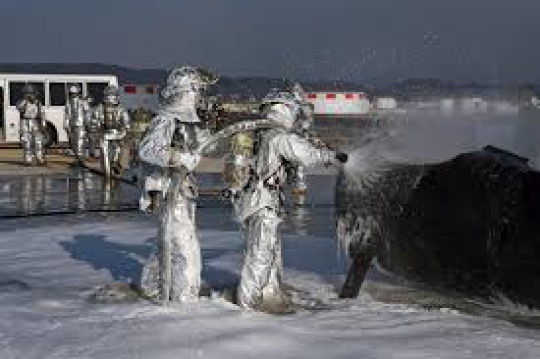Phil Pennington, Reporter
The government is expanding the investigation into water and soil contamination from chemicals commonly found in firefighting foam.

Responsibility for the investigation - which has been led by the defence force until now - will also pass to an across-government group.
"The national scale of the investigation requires a significantly larger response for at least the next 12 months," a newly released Cabinet paper said.
The defence force had a water and soil testing programme planned for the next year "prioritised in order of risk to human health".
The paper signalled that defence was handing over the reins and the investigation at defence bases would now be led by the all-of-government programme headed by the Environment Ministry.
"All information arising from the test results is reviewed by the all-of-government group, including the Ministry of Health, Ministry for Primary Industries, and local government so that communities can be provided with the best advice," the ministry told RNZ today.
Read the PFAS Cabinet paper (PDF, 398.7KB)
So far the focus has been on Defence Force testing around its bases for the PFAS chemicals, which have raised increasing environmental and health alarms worldwide over the last two decades.
It has focused on the three such chemicals the most is known about - PFOS, PFOA and PFHxS. This is already behind the global trend, which is to also consider the many hundreds of other types of PFASs as a potential threat too.
So far about $100,000 has been spent on the investigation in New Zealand, with $1 million budgeted for this financial year.
Australia and the US are each spending tens of millions of dollars on investigations, government-funded health research and clean-ups.
A third round of testing at properties around Ōhakea and Woodbourne Defence bases was completed last week, with more than 400 samples taken. Results are expected in July.
The Cabinet paper said the focus was widening to identify other sites and "supporting councils and communities to undertake investigation and mitigation actions where required".
"There is increasing public concern about the uncertainty of PFAS contamination, what it means for individuals, land owners and businesses, and how it may impact regions around New Zealand," the paper said.
"The all-of-government programme will provide consistency of information and response across the country."
In the US, where the military still uses huge amounts of contaminating foam, mitigation since 2008 has included getting rid of contaminated soil and using water-filtering, both hugely expensive.
The Environment Ministry here has previously said that for any clean-up, the use of tests that detect a wider range of PFASs, would be "essential".
However, that type of testing was still not being used and the Cabinet paper did not mention it.
New standards and protocols for sampling and testing would be set this year, it said.
Auckland airport has confirmed it still has stocks of firefighting foam "that are likely to contain PFOS and PFOA", even though New Zealand banned the chemicals 12 years agoy.
The Environmental Protection Authority has not issued a compliance order on Auckland airport, even though it did impose such orders on four smaller airports found with the foam.
It would not make any comment about why it was treating Auckland airport differently.
Auckland Airports said it was now working on how to get rid of its "securely stored" foam.
It had "engaged consultants to carry out a preliminary site inspection to look for any areas of potential contamination".
"We are also carrying out testing," the airport said.
Both Christchurch and Wellington airports said they had not had foam containing the banned chemicals for more than a decade, and both were now shifting to use only fluorine-free foams.
Wellington airport has engaged environment scientists to do a site-wide investigation, as the foams persist in the soil and water for centuries.
Christchurch airport's master plan listed stormwater testing and controlled clean-ups of any spills among measures it takes to protect groundwater.
"As the airport is located above the sensitive groundwater aquifer, CIAL [Christchurch International Airport Limited] considers that the prevention of stormwater pollution and contamination of soil and ground water is of utmost importance," it said.



 Gordon Campbell: On When Racism Comes Disguised As Anti-racism
Gordon Campbell: On When Racism Comes Disguised As Anti-racism Peter Dunne: Newshub And TVNZ Tip Of Media Iceberg
Peter Dunne: Newshub And TVNZ Tip Of Media Iceberg Harry Finch: Austerity – For And Against
Harry Finch: Austerity – For And Against Gordon Campbell: On Winston Peters’ Pathetic Speech At The UN
Gordon Campbell: On Winston Peters’ Pathetic Speech At The UN Binoy Kampmark: Flicker Of Hope, Biden’s Throwaway Lines On Assange
Binoy Kampmark: Flicker Of Hope, Biden’s Throwaway Lines On Assange Media Matters NZ: Here We Go Again
Media Matters NZ: Here We Go Again